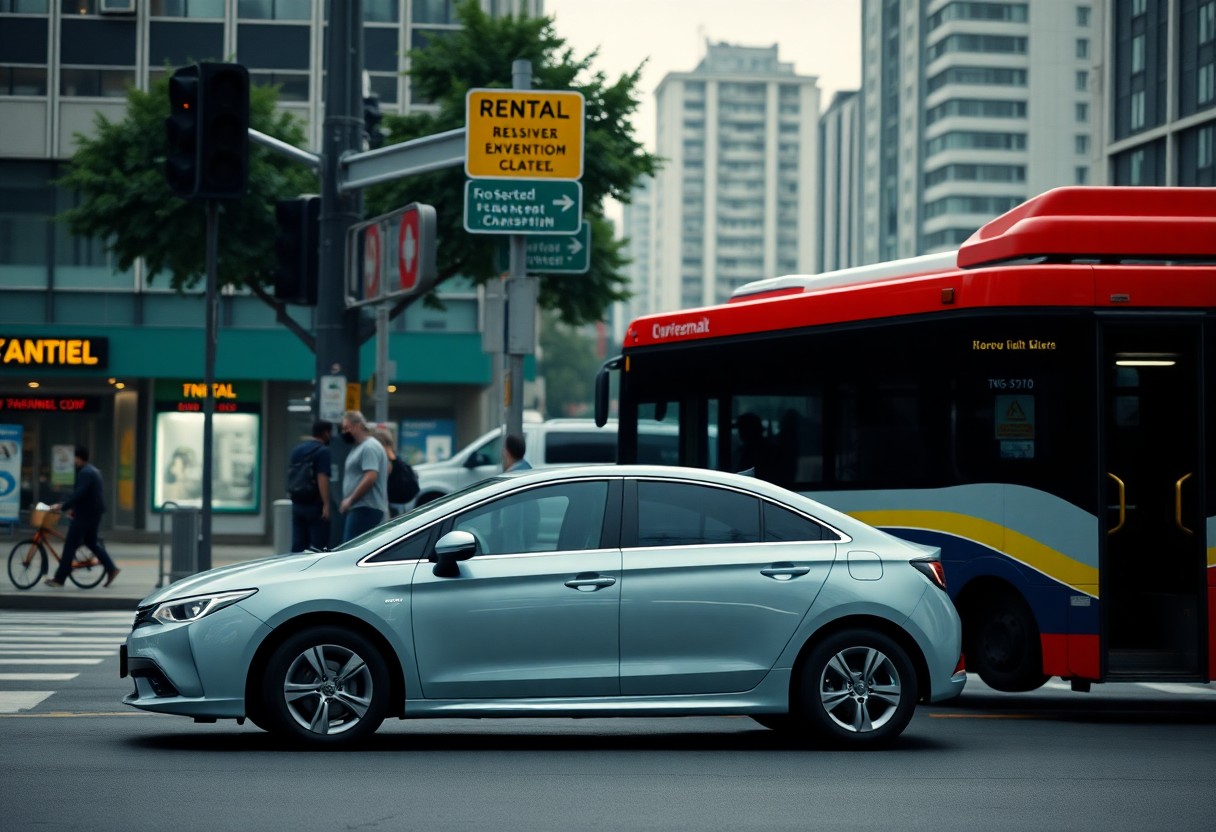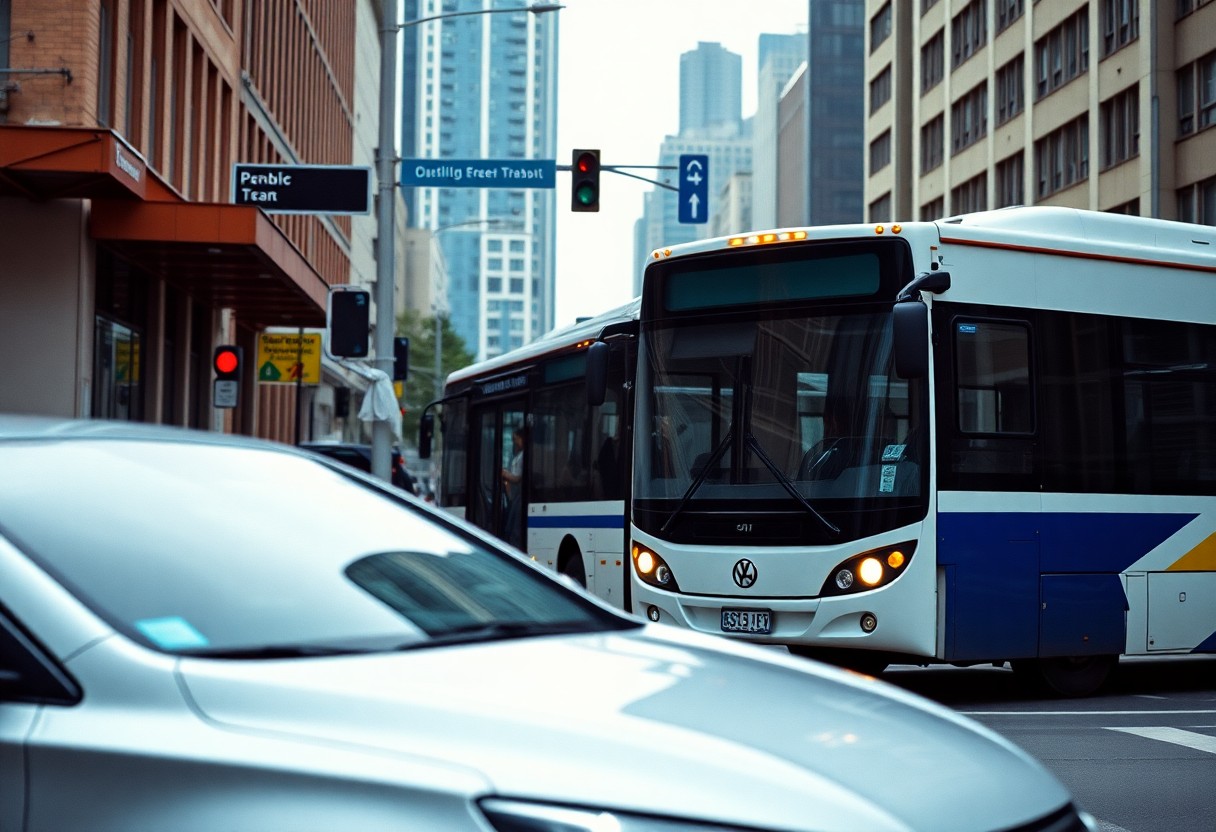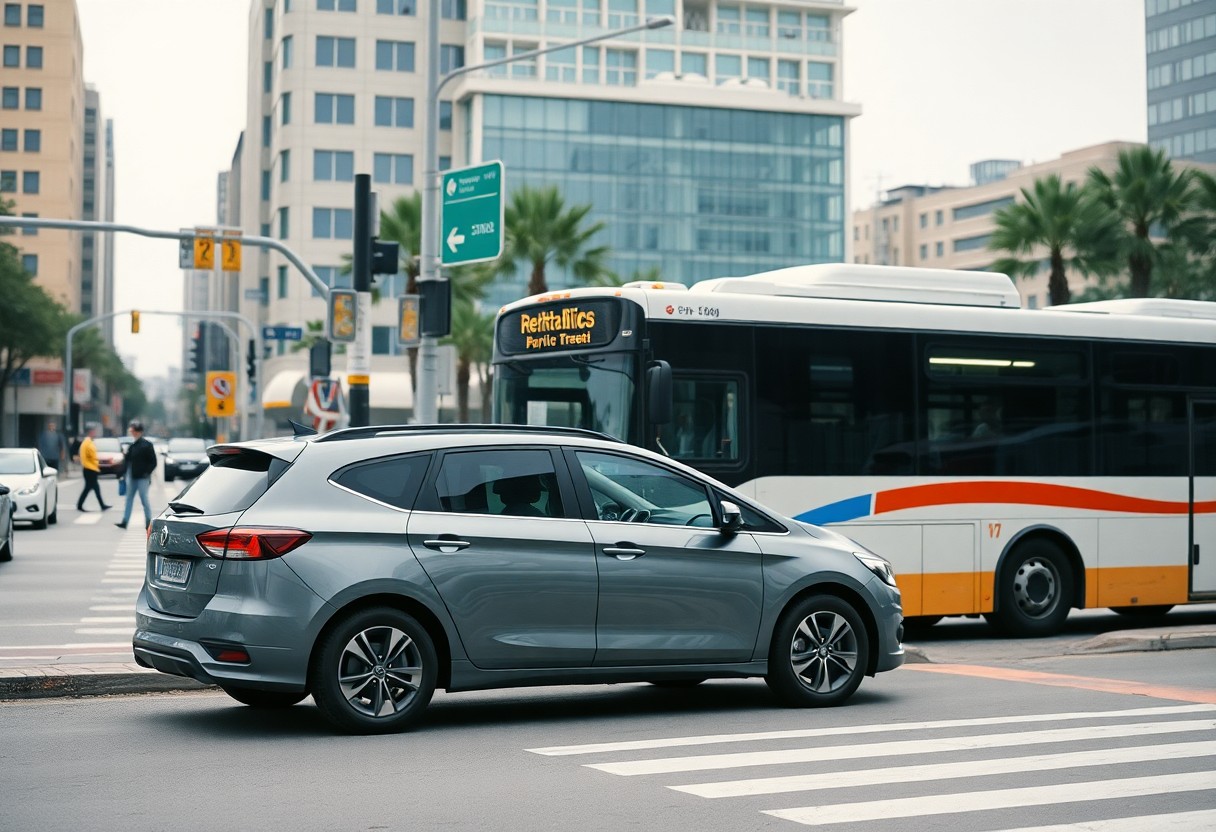As travel costs continue to rise and personal time becomes increasingly valuable, choosing the ideal transportation method for your journey is essential, as it affects both your financial budget and overall travel experience. When planning your next adventure, you’ll face the choice between the freedom offered by a rental car and the affordability of public transportation. Your decision will depend on various factors, including your travel destination, planned itinerary, and the number of travelers accompanying you. This in-depth guide aims to help you navigate critical considerations, from hidden rental fees to public transport accessibility, ensuring you make an informed decision tailored to your unique travel needs.
Unlock Unmatched Travel Freedom with a Rental Car
Opting for a rental car provides unparalleled independence, opening up a world of travel possibilities. With a rental vehicle, you gain full control over your itinerary, allowing you to visit destinations that extend beyond typical tourist hotspots. Recent surveys reveal that 73% of travelers favor rental cars for their flexibility, making this choice particularly attractive for those who value autonomy during their travel adventures. Imagine being able to explore off-the-beaten-path locations and make spontaneous stops, enhancing your overall journey and creating unforgettable memories along the way.
Weighing the Advantages and Disadvantages of Rental Cars
Once you secure your rental vehicle, you will experience both newfound freedoms and certain limitations. You can explore remote areas and adjust your schedule as needed, but be aware of potential parking fees (which can average between $25-45 daily in busy urban areas) and the navigation challenges you might encounter. While your rental car serves as a personal retreat, you will also bear the responsibility of managing fuel costs and navigating through traffic on your own. It’s crucial to assess these factors to ensure a smooth travel experience tailored to your needs.
Discovering Hidden Costs and Potential Savings
Although the freedom of a rental car does come at a price, it can also lead to unexpected benefits. While initial rental fees might seem high, it’s important to recognize that traveling in a group can often reduce costs compared to purchasing individual public transport tickets. Recent data suggests that families of four or more can enjoy savings of 15-20% on transportation costs by opting for a rental vehicle as opposed to public transit options. Thoroughly evaluating these financial aspects will help you make a more informed decision on your travel budget.
A deeper dive into the financial implications reveals additional considerations. Insurance premiums can add $15-30 per day to your rental expenses, but many credit card providers offer rental car protection options. Moreover, the impressive fuel efficiency of modern rental fleets (averaging around 30-35 MPG) can help offset overall travel expenses, while the convenience of door-to-door travel can save you significant amounts of valuable vacation time.

Mastering the Public Transportation System for Seamless Travel
If you choose to rely on public transportation, gaining a solid understanding of the system should be your first step. Most major cities now offer user-friendly transit apps that assist with route planning, real-time arrival tracking, and ticket purchases. Familiarizing yourself with the local transit network is crucial, encompassing bus routes, subway lines, and transfer stations. Research indicates that 55% of urban travelers save as much as 30 minutes per trip by utilizing these transit applications, enhancing the efficiency of their travel experience.
Navigating the Unique Urban Public Transit Landscape
Every city’s public transportation system has unique patterns and operating rhythms. Be prepared for peak hours, typically between 7-9 AM and 4-6 PM, when crowds are at their densest. Therefore, your navigation strategy should include alternative routes, as delays can frequently occur. Incorporating a buffer time of 15-20 minutes for crucial appointments will help ensure you arrive on time, making your travel experience more enjoyable and stress-free.
Embracing the Social Dynamics of Public Transit
In addition to practical considerations, using public transportation offers a unique social experience. You will share space with both locals and fellow travelers, allowing you to immerse yourself in the city’s true essence. While this can lead to occasional uncomfortable situations, it also provides valuable cultural insights. Research suggests that regular public transit users develop enhanced social adaptation skills as they navigate various social scenarios, enriching their travel experience further.
At times, you may find yourself maneuvering through diverse social situations on public transport. From the bustling energy of rush hour to the quiet solitude late at night, each period presents its own unique atmosphere. Safety becomes especially critical during off-peak hours, so remaining vigilant and selecting well-lit, populated areas for waiting is essential. Most transit systems now feature 24/7 security monitoring and emergency communication systems to enhance your safety while traveling, providing peace of mind during your journey.
Assessing the Financial Implications of Your Travel Choices
When weighing your travel options, budgeting plays a vital role in deciding between rental cars and public transport. Your transportation expenses can vary significantly based on factors such as destination, trip length, and the number of travelers. While rental cars provide greater flexibility, they come with hidden costs such as insurance, fuel, and parking fees. Although public transit may seem less expensive initially, frequent daily rides can lead to accumulating costs that may surprise you.
Breaking Down the True Costs of Driving
A financial evaluation of car rentals uncovers expenses that extend beyond the daily rental rate. You should account for $30-50 daily for insurance, average fuel expenditures of $40-60 per tank, and potential parking fees that can escalate to $50 per day in major metropolitan areas. Consequently, your total daily travel costs could range from $100-200, making this option more economically viable when traveling as a group. Understanding these costs will allow you to make a more informed choice based on your budget.
Understanding the Financial Dynamics of Transit Tickets
At first glance, public transportation appears to be the more economical option. In cities like New York, where average metro cards are priced at $34 for unlimited weekly rides, substantial savings can be realized when compared to rental car expenses. Additionally, you will avoid extra costs such as parking and fuel, making public transit particularly advantageous for solo travelers looking to minimize expenses during their journey.
Cost comparisons reveal that weekly public transport passes in many large cities range from $25-40, offering unlimited rides. However, for families or groups of four or more, the total cost of multiple transit passes might surpass the cost of a rental car, especially when planning extensive daily travel or trips to areas with limited public transport services. Evaluating these factors is essential to determine the best transportation option for your group.

Maximizing Your Time Management for Efficient Travel
As you choose between rental cars and public transport, prioritizing your schedule is crucial. A rental car allows for direct, point-to-point travel, potentially saving you up to 40% of your travel time compared to public transportation. Your time is precious – while public transport may appear cheaper, it is vital to consider the hours spent waiting, transferring, and walking to and from stations, which can add up and detract from your overall travel enjoyment.
Embrace the Freedom of Flexible Scheduling with a Rental Car
When it comes to scheduling flexibility, a rental car grants you complete autonomy over your departure and arrival times. You are free from rigid transit schedules, enabling spontaneous detours or last-minute adjustments to your itinerary. This level of freedom is invaluable when plans change unexpectedly or when you stumble upon hidden gems during your trip, allowing you to fully embrace your travel experience.
Navigating the Complexities of Public Transport Timetables
One of the primary challenges associated with public transportation is adhering to schedules. Studies indicate that 23% of urban buses fail to run on time during peak hours, which can disrupt your travel plans. Your journey may require multiple connections, and delays in one service can create a ripple effect, impacting your entire day’s agenda and leading to frustration.
To effectively navigate public transport, it’s wise to build in extra buffer time. Transport experts recommend adding 15-20 minutes to your estimated travel time for each connection. During rush hours or special events, consider doubling these buffers, as they can significantly affect the amount of time you have available for activities and sightseeing.
Assessing the Environmental Impact of Your Transportation Choices
When evaluating your transportation options, it’s essential to recognize the environmental consequences of your decisions. A single-occupancy rental car emits approximately 404 grams of CO2 per mile, whereas public transportation can reduce emissions by up to 45% per passenger. The choice between renting a car and utilizing public transport creates a lasting environmental footprint that you should thoughtfully consider as part of your travel planning.
Understanding Your Carbon Footprint in Travel
Each mile you travel has a direct correlation with climate change and environmental degradation. A fully-loaded bus can eliminate the need for 50 cars on the road, significantly reducing overall carbon emissions. Your journey in a rental car can produce 4-5 times more CO2 than the equivalent trip via bus or train; however, opting for electric or hybrid rental options can help mitigate this impact and make your travel more sustainable.
Exploring Eco-Friendly Transit Alternatives for Sustainable Travel
Upon reaching your destination, you’ll discover a variety of environmentally friendly transportation choices. Electric car rentals can minimize your carbon footprint by up to 50% compared to traditional vehicles. Many cities are now equipped with hybrid buses and electric trams, rendering public transport an increasingly sustainable option for conscious travelers.
Consequently, your environmental impact can vary significantly based on the transportation choices you make. Consider adopting a mixed-method approach – rent an electric or hybrid vehicle for extended trips while relying on public transport in congested urban areas. Numerous rental agencies now provide green vehicle options, enabling you to maintain mobility while reducing your ecological footprint, making your travels more responsible.

Enhancing Your Comfort and Enjoyment During Travel
In contrast to public transportation, rental cars provide complete control over your comfort preferences. You can easily adjust the climate, seat positioning, and audio settings to align with your personal tastes, creating a tailored travel atmosphere. This degree of customization becomes particularly valuable during extreme weather conditions or lengthy journeys, where overall comfort can significantly influence your travel enjoyment and satisfaction.
The Advantage of Personal Space in Rental Vehicles
One of the standout benefits of renting a car is the guaranteed personal space it provides. You will not have to contend with crowded buses or trains, where personal space often shrinks to less than 4 square feet during peak travel times. Your rental car serves as a private oasis, allowing you to maintain full control over who shares your travel environment and ensuring a more pleasant and relaxing journey.
The Varied Comfort Levels of Public Transportation
Comfort levels on public transit can fluctuate greatly due to factors beyond your control. During peak hours, you may find yourself squeezed in with 150-200 passengers in a single subway car, considerably diminishing your comfort. The experience often entails standing for extended periods, particularly during the average 38-minute commute in major metropolitan areas, which can be tiring and frustrating.
During a typical rush-hour scenario on public transport, you may encounter noise levels peaking at around 80-90 decibels, comparable to heavy city traffic. These conditions, coupled with unpredictable delays and service interruptions, can render your journey less enjoyable and more taxing, especially when traveling with luggage or in a group, making comfort an important aspect of your travel planning.
Making the Right Transportation Choice Based on Your Needs
Ultimately, your decision between renting a car and utilizing public transport should be based on your specific travel requirements. If you prioritize flexibility and comfort while traveling with family or friends, a rental car typically offers the best value, even with the higher initial costs. Conversely, public transportation is often ideal for solo travelers on a budget who stick to well-established routes in urban centers. It’s essential to consider factors such as your destination, group size, planned activities, and budget. By carefully weighing these elements against your personal priorities, you can select the transport option that best aligns with your travel goals and enhances your overall experience.
The Article: Renting a Car vs. Public Transport: Which is Best for Your Trip? appeared first on https://rentacar24.org/
The Article Renting a Car vs. Public Transport: Choose the Best Option for You Was Found On https://limitsofstrategy.com



Your analysis of transportation options highlights an often-overlooked aspect of travel planning—how our choices reflect not just our preferences, but also our circumstances. Personally, I’ve found that the allure of a rental car’s freedom can quickly fade when faced with the realities of fuel costs, parking fees, and the stress of navigating unfamiliar roads. For instance, during a recent trip to a city known for its dense historical districts, I opted for public transport instead, which allowed me to immerse myself more in the local culture without the hassle of driving.
You’ve touched on a significant point that many travelers grapple with—balancing the desire for freedom with the practicalities of travel. The excitement of driving through new places often gets overshadowed by those hidden costs and stressors. When you’re navigating tight streets in a city rich in history, public transport can actually unveil a deeper experience. It’s fascinating how stepping onto a bus or tram opens the door to witnessing the daily rhythm of local life.
You make an excellent point about the balance between the freedom of driving and the immersive experience of public transport. I’ve found that those moments on a bus or tram really allow you to soak in the local atmosphere in a way that driving often doesn’t. There’s something special about watching the world unfold outside the window—seeing everyday interactions, local shops, and people living their lives.
The choice between a rental car and public transportation is indeed a nuanced one, and your post highlights some crucial considerations that many travelers often overlook. From my personal experiences, I find that the decision often hinges greatly on the specific nature of the destination and the type of experience I hope to cultivate during my travels.
Your exploration of transportation options in travel really speaks to the core dilemma many of us face when planning a trip. It’s interesting to reflect on how our choices of transportation can influence not just our itineraries, but also our experiences and interactions with the places we visit.